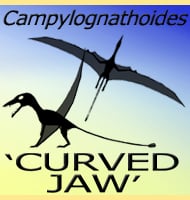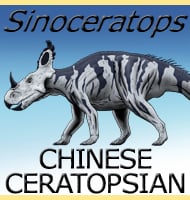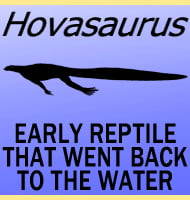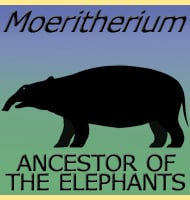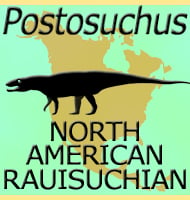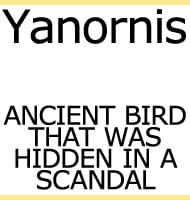In Depth
Hypsognathus is regarded as one of the last of the procolophonids, a group of parareptiles that became common during the Permian and Triassic periods. The earliest members of this group are believed to have been insectivores due to the form of their teeth. The teeth of Hypsognathus however were quite different to those of earlier forms in that the front teeth could still be used to selectively snip off parts of plants so that the rear teeth which were wider and more robust could grind them up. These teeth along with those of some other later procolophonid genera indicate a shift in the procolophonids towards herbivory as they developed. The most instantly recognisable features of Hypsognathus are the large spikes on the head which grow out from the skull. Most of these spikes grow out to the sides, but a single pair are known to have grown downwards. The spikes are most commonly explained as a form of defence against predators of the time such as primitive theropod dinosaurs and rauisuchians, however one look at the whole animal can cast quite a bit of doubt upon this. The spikes are only present upon the head, so all a predator would have to do was literally grab any part of the body and it would be able to capture a Hypsognathus without coming anywhere near the spikes.
The type genus of the Procolophonidae, Procolophon, is considered to have been a been a burrowing animal due to the shape and proportion of the limbs. If Hypsognathus too were also burrowing animals, then the lack of spines on the body could be easily explained by the simple fact that they would not be needed if Hypsognathus spent most of their time under the ground. This way they could always rest with their heads facing towards the burrow entrance so that it would be difficult for a predator that managed to get its jaws into the hole to get its teeth around the head of the Hypsognathus. The spikes might also have been used to anchor the head into the sides of the burrow so that it was very difficult for a Hypsognathus to be extracted. This all depends however upon if Hypsognathus spent time in burrows.
It is also possible that the spikes on the head of Hypsognathus were also for display along the lines of interspecies recognition. This is explained by the observation that different procolophonid genera usually have spikey growths around the back of the head though usually the form and number of spikes are different from one another.
Further Reading
- New Fossil Reptile from the Triassic of New Jersey - Charles W. Gilmore - 1928. - Cranial Osteology of Hypsognathus fenneri, a latest Triassic procolophonid reptile from the Newark Supergroup of Eastern North America - H.-D. Sues, P.E. Olsen, D.M. Scott & P.S. Spencer - 2000.

